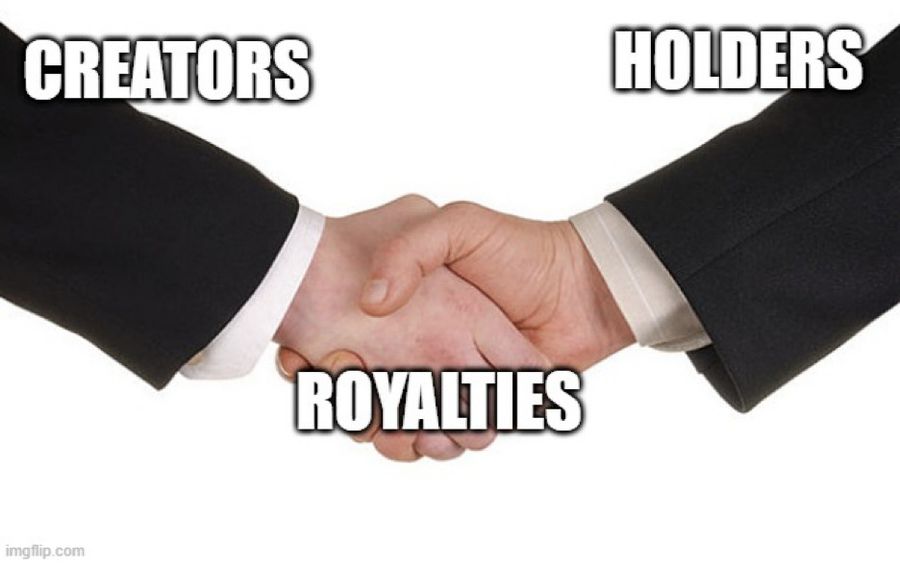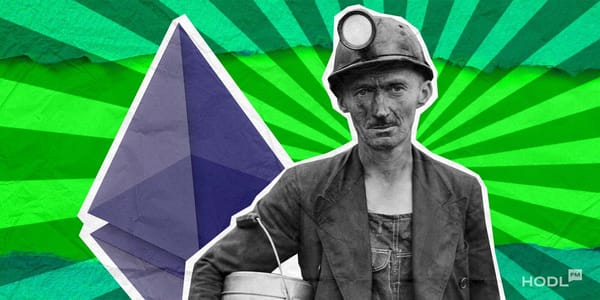The worst nightmare of any creative talent would be missing out on royalties. The good news is with NFTs, digital creators can now earn passive income and receive their fair share of value from their creative endeavors. And what is more? They can earn this in a decentralized ecosystem or without utilizing intermediaries.
NFT royalties allow digital artists to earn passive income from their creations long after the initial sale. It’s like having a perpetual money-making machine powered by a single digital asset. Now, let’s pull back the curtain and find out what exactly NFT royalties are and how they work.

What are NFT Royalties?
NFT royalties are ongoing compensation creators receive when their Non-Fungible Tokens (NFTs) collectibles are resold in the secondary market. It is more like getting a bonus every time someone buys and sells your digital artwork.
When you create an NFT, you can set a percentage, usually between 5-10%, that you’ll receive whenever your NFT is sold in the future. However, there’s a catch – a legal system doesn’t enforce the contract but relies on “smart contracts.”
Innovative contract platforms automatically take care of the payments, so you don’t have to worry about chasing down your earnings. It’s a way for digital artists and content creators to keep earning even after their artwork is initially sold.
Read more: Top Platforms Supporting NFT Royalties
Importance of NFT Royalties
- Supporting artists and creators
The most notable aspect of NFT royalties is their role in supporting artists and creators by providing them with a sustainable revenue stream. These royalties are a reliable source of income, allowing artists to focus on their craft and pursue their passion. Through compensation from sales, artists can continue to benefit from the value and success of their digital creations.
- Promoting innovation and creativity
By ensuring that artists receive rewards for their creations, NFT royalties create an environment that fosters innovation and creativity. Artists are motivated to push boundaries, explore new territories, and take risks in their work, knowing they can earn royalties from future sales. This encourages artists to keep producing content while promoting a thriving expression ecosystem.
- Considering the market
NFT royalties also address the challenges of tracking and monetizing artwork sales in traditional creative sectors, unlike in Web2 models where tracking sales can be tasking, leading creators to miss out on subsequent profits.
NFTs make it easy to track and enforce royalties for creators. This ensures that creators can earn royalties at every resale point, fostering a more sustainable relationship between creators and fans.

How NFT Royalties Work
When setting up NFT royalties, the process is straightforward. All that is required is that the creator mints their digital assets -in the minting phase- and lists them on a marketplace. During this phase, creators can choose their desired royalty percentage and select the wallet where their payouts will go.
Automating the royalty payment process is handled by smart contracts. When someone buys an NFT from the creator and sells it to another buyer, the smart contract verifies the secondary sale, reserves the agreed-upon percentage as a royalty payment, and securely delivers it to the creator’s designated wallet.

Once there is a secondary sale, the original artist receives a royalty payout, typically ranging from 2% to 10% of the sale price. The platform also takes a “royalty fee” of about the same percentage.
There are two ways to add royalties to NFTs. The first is when the platform automatically embeds a royalty percentage in the smart contract, while the second allows artists to manually add a custom contract with their chosen royalty percentage, often lower than the platform’s default.

Challenges and Limitations
Implementing royalty functionality in NFTs can be challenging because it involves working with smart contracts. Creating or modifying these smart contracts to include royalty features can be technically complex.
Additionally, ensuring that royalties are accurately calculated and distributed correctly, especially when many transactions and resales happen, requires much attention to detail in the coding and rigorous testing to ensure everything works smoothly.
Read More:
- OpenSea Review 2023 – Full Overview of OpenSea NFT Marketplace
- Rarible Review – Full Overview of Rarible NFT Marketplace
- SuperRare 2023: Full Overview of SuperRare NFT Marketplace
As the NFT market keeps blowing up, scalability becomes a big deal. Making sure that royalty calculations and payments can handle the growing number of transactions and sales without slowing down or costing a fortune in gas fees on the blockchain can be a real technical challenge.
The problem with current NFT royalty models is a need for universal standards for handling royalties, making it difficult for artists to receive consistent payments across platforms. Resale transactions should be more noticed, resulting in missed earnings for artists. Additionally, there needs to be more transparency in royalty calculations and distributions, making it challenging for artists to track and verify their payments.
What’s Next?
The future of NFT royalties holds so much potential, especially for transforming content creation and distribution. And as the concept continues to gain popularity, several exciting predictions regarding its evolution are emerging within the NFT space.
We must admit that there is room for improvement with the NFT royalty model. We expect increased standardization and interoperability across platforms in the coming year, ensuring seamless royalty tracking and distribution. Also, advancements in blockchain technology –as we hope– will enable real-time royalty payments, eliminating delays and enhancing the overall user experience.
Furthermore, NFT royalties can empower creators in more ways than we imagine. By providing ongoing revenue streams, artists can focus on their craft without solely relying on upfront sales. Introducing dynamic NFTs, which allow for altering or upgrading metadata, opens up exciting possibilities for creating unique traits and experiences for dedicated users.
Also, the fusion of NFTs and artificial intelligence (AI) holds immense potential for the future of the attention and loyalty economies within Web3. As artificial intelligence gains popularity in 2023, the fusion of NFTs and AI presents limitless opportunities for innovation and creativity.
Conclusion
It’s no more news that new technology like NFTs and artificial intelligence (AI) transform how we work and get compensated for our work. However, NFT royalty is at the forefront, providing artists with severe financial rewards and recognition for their digital creations.
These royalties ensure that creators get a piece of the action whenever their NFTs are bought, sold, or traded, allowing them to ride the wave of increasing value and popularity in the secondary market.

By setting a percentage for royalties, artists can earn a bonus every time their NFTs are resold in the secondary market. This incentivizes innovation, promotes creativity, and encourages artists to continue producing content. Several platforms support NFT royalties, such as OpenSea, Blur, Rarible, SuperRare, and Magic Eden. These platforms enable artists to earn royalties and offer various features and fee structures to cater to different needs.
The future of NFT royalties may witness efforts towards standardization, customizable structures, dynamic adjustments based on market conditions, decentralized protocols for increased transparency and security improved tracking capabilities combined with analytics tools for insights into sales performance. These developments will shape the evolution of NFT royalties and contribute to the overall growth and maturation of the NFT ecosystem.
Disclaimer: All materials on this site are for informational purposes only. None of the material should be interpreted as investment advice. Please note that despite the nature of much of the material created and hosted on this website, HODL FM is not a financial reference resource and the opinions of authors and other contributors are their own and should not be taken as financial advice. If you require advice of this sort, HODL FM strongly recommends contacting a qualified industry professional.




